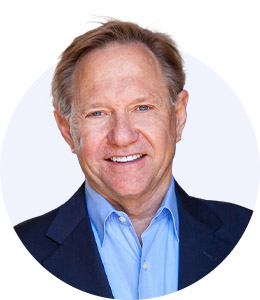There are many items involved in running a financially sustainable company/organization. The intent of this column is to point out three that have a large impact on all operations. They are selection, development of leaders, and messaging.
Companies usually have someone whose main job is to oversee these areas. In the book Execution: The Discipline of Getting Things Done by Larry Bossidy and Ram Charan, the authors shared that while someone else may be the main point person in each area, it is imperative that the top leader stay very close to how people are hired, how talent is developed, and how internal and external communication are developed and delivered.
It was normal during the pandemic to not be as engaged in certain areas as you normally would have been. Keeping service going took precedence over many things, as it should have. Now is a good time to ask yourself if you drifted a bit away from ensuring that great hiring, great development of leaders, and great communication took place. The most recent employee engagement survey data shows that all three suffered during the pandemic.
In the Human Capital Ecosystem™ created by Healthcare Plus Solutions Group (HPSG), “selection and onboarding of talent” is one of the components. As part of assessing an organization, leaders are asked to rate on a 1-10 scale how well they feel the organization does in selection and onboarding of talent. A 10 means “best in class,” and 1 means “we have no idea what we are doing.” The average rating tends to be in the 6/7 range: not bad, not good.
I have had the good fortune of hearing presentations from many well-regarded management experts. I have lucked into having one-on-one conversations with them also. A question I ask is, What is the number-one area a CEO or organization should be great at? “Selection of talent” is a consistent answer. I hear, “You get this right, and many of the other items for success will fall into place,” and, “It can take minutes to hire someone and years to fire someone.” So, getting selection right is vital.
Now for development. Again, because a company likely has a department or person whose primary job is organizational development, all skill-building needs top leader input.
Emotions range from, “I need to be involved in this area,” to, “These people are specialists, and I don’t want to micromanage them.” When I say CEO involvement, it means making sure all development is geared toward achieving the organizational goals, that there are resources invested in the development of people, and that leaders don’t feel it is the organizational development or human resources department’s job. Development needs all hands on deck.
I am excited to see how Precision Leader Development™, HPSG’s approach to investing in talent, brings development to the individual level. When I was president of Baptist Hospital in Pensacola, Florida, a CEO of a health system called me. He asked who oversaw organizational development at Baptist Hospital. I said I did. It’s not that others don’t work in an OD function. The point is, making sure the right people are working in the organization and the best culture is being built and sustained is Job One for a CEO. Organizational development is all about culture.
What about messaging, or as some may see it, communication? Again, organizations usually have someone over this function besides the CEO. Messaging is the key to so many things: from how others view the brand to how internal communication is sent and received. The tone and tenor of communication is critical, as are the message points. I have written before that people over media relations and communications are talented. They do the best they can. They and the top leader must be on the same page. How much does the top leader want to be publicized? Are there key messaging points internally and externally? Can a leader be overexposed? The relationship needs to be one in which the communications people understand when the top leader likes to write things in their own style. Also, the communications people need to feel comfortable sharing with the top leader ways they can improve their messaging.
A good leader will put others in front when the message is positive, and they will be in front when it is not. This is explained so well in Jim Collins’s book Good to Great. I recently read a media release that a company sent out. As I read it, I was surprised by some of the content. I called the president of the company, whom I know well. I shared with him that in reading the release, it did not seem to convey an inclusive message. It limited attendance when the goal was to gain attendance. He explained he had not read the release before it went out. This is not to say the CEO must read every release. I am saying they need to have a system in place to make sure all messages set the tone they want to set.
Here are some tips to help CEOs keep these three items close to them:
- Selection. At what level does a leader need to meet with potential hires? What systems are in place in the hiring process—from key questions to peer interviewing to reference and background checks—that are not optional? Are they being done effectively (or at all)? The president of an organization (let’s call it Company A) shared with me they had seen the CEO of another organization (let’s call it Company B). As it happened, Company A was interviewing someone who supposedly worked for Company B. During this conversation, the candidate’s name came up. The CEO of Company B shared that the person no longer worked there. Of course the president of Company A quickly called the hiring manager and shared what they had heard. It became apparent the candidate was not being truthful, and the reference check system was very lacking.
Look around at your talent. If you have great talent across the board, you most likely have an excellent selection system. If you don’t, it’s time to revisit your system. Selection is a team process. The key owner of the final selection is the person the new hire will report to.
- Development.Times have changed. No longer can an organization hire someone, have them attend a one- or two-day orientation program, and feel the development is over. Development is never-ending. We know that people tend to stay in organizations when they feel they are being invested in. To check how this is going, here is a simple exercise: At your next meeting with leaders, ask each person to go over who reports to them and share what skill development is taking place right now and how.
With COVID, several challenges have been exacerbated. Due to resignations, there is a greater percentage of new people in leadership positions than is normal. Plus, in many cases, the pandemic interfered with an organization’s ability to provide development. So, we are playing catch-up. We must be sensitive to how to help managers in development. It takes precision to make sure the resource provided to each leader fits what is needed and is done in a helpful manner. What works well for some people may be overwhelming to others.
- Messaging. As a top leader, take time with those over areas like media and communications to create the process that works best. This may include building the time for you to review releases and/or providing the key points for communication. It can also be good to put guidelines in place around frequency. My personal observation is that due to social media, many top leaders are in danger of overexposure. How many photos of the top leader can be viewed before people’s eyes glaze over?
With external messaging, it is important to be responsive—or even better, proactive. With internal messaging, it is good to take time to ask the workforce what they need in order to feel there is excellent communication in place. If you are interested, contact me at quint@quintstuder.com and I will send you a short video on internal communication at the department level.
Organizations are fortunate to have talented people in human resources, organizational development, and communications. Yet as talented as they are, they can’t have the perspective or the inside knowledge that the CEO or business owner has. The closer you work with these areas, the more effective each will be—and the more effective the entire organization will be.







